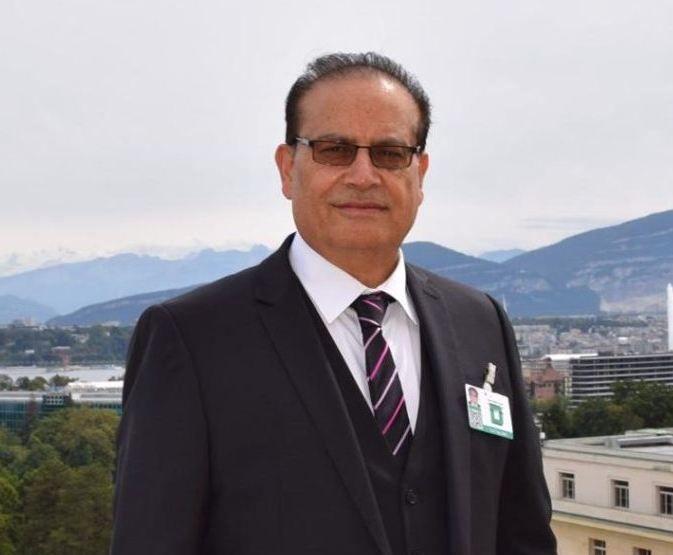By: Qamar Bashir
The Asian Development Bank’s recent outlook points to growth potential, contingent upon addressing underlying issues, building a more stable political environment, diversifying the economy, and investing in infrastructure which will usher the country towards sustained economic prosperity.
The SWOT analysis of ADB’s outlook for Pakistan’s economy reflects a mix of strengths, weaknesses, opportunities, and threats. One of the strengths identified is the potential for GDP growth of 1.9% in 2024 and 2.8% in 2025 if Pakistan adheres to the economic adjustment program critical for restoring macroeconomic stability and gradual growth recovery. This anticipated rebound is bolstered by ongoing IMF support, which enhances market confidence and attracts external financing. However, growth prospects still hinge on higher crop output, improvements in manufacturing, and a rebound in private sector investment, contingent on factors such as progress in reform measures driven by increased confidence, reduced macroeconomic imbalances, achieving greater political stability, and improved external conditions.
The weaknesses pointed out by the ADB reports are high inflation which would continue at about 25% in FY2024, driven by higher energy prices, and may ease down to 15% in FY2025, if progress on macroeconomic stabilization continues. In an effort to reign in the python of inflation, the State Bank of Pakistan (SBP) has maintained a tightened monetary policy, keeping the policy interest rate at 22% due to persistent inflationary pressures and external imbalances. The SBP is expected to maintain a tight policy to lower inflation by 5%–7%. However, political uncertainty remains a significant challenge, potentially hampering reform efforts and economic stability. The projected growth rate of 1.9% in 2024 and 2.8% in 2025 is very low compared to any other countries of the region (India 7% Bangladesh 7.1%, China 4.8%). If we factor in annual population growth rate of 2% the nominal GDP growth will be (1.9-2=0.1 in 2024), (2.8-2=0.8% in 2025) whereas a country needs a growth rate of at least 7% to absorb the addition of workforce which enters every year in the country’s labor market.
Opportunities lie in attracting private sector investment through reforms, enhancing infrastructure to boost efficiency, and fostering regional cooperation to access new markets. Threats including a global economic slowdown, climate change impacts on real growth.
Pakistan has been facing cyclic economic crests and troughs since the past 50 years marked by periods of impressive growth followed by setbacks triggered by political instability, external shocks, and natural disasters. The “Asian Tiger” era of the 1960s and the remittance-fueled boom of the 2000s contrast with lows in the 1970s and 1990s due to political instability. External shocks like the global financial crisis and wars, along with natural disasters such as floods and the recent pandemic, have further challenged economic stability.
These cycles underscore key vulnerabilities, including frequent changes in government that hinder long-term planning, a heavy reliance on imports, and inadequate infrastructure leading to bottlenecks. Moreover, persistent high government spending exceeding revenue has contributed to debt and inflation.
In recent years, Pakistan experienced impressive economic growth, reaching 6.2% in 2022 across various sectors including agriculture, large-scale manufacturing, real estate, and IT. However, this growth was overshadowed by political uncertainty triggered by a no-confidence motion against the prime minister, followed by PTI agitation that disrupted governance. These events contributed to a sharp decline in the value of the Pakistani rupee, imposed curbs on imports, and weakened production, consumption, and investment. Additionally, devastating floods further compounded the challenges faced by the economy. This period of uncertainty persisted through coalition and interim governments, leading to an overall economic slowdown in fiscal year 2023 (ended 30 June 2023).
Achieving sustainable economic growth and proving the prediction of international financial institutions wrong is possible. Many other countries like South Korea, India and Ireland which had been facing the similar situation, but on the strength of competent leadership, applying innovative and creative macroeconomic and fiscal measures not only defied the predicted low GDP growth but surprised the world by achieving much higher economic growth.
South Korea faced severe economic challenges during the Asian Financial Crisis of 1997, including a sharp decline in GDP growth and currency devaluation. The IMF and World Bank initially predicted a slow recovery. However, under the leadership of President Kim Dae-jung, South Korea implemented bold reforms, including corporate restructuring, financial sector reforms, and opening up to foreign investment. These measures helped South Korea recover faster than expected. After the bounce back from the 1997 Asian financial crisis, the economy continued strong growth in 2000 with a GDP growth of 9.08%.
In 1991, India faced a balance of payments crisis, and the IMF and World Bank projected low GDP growth. The Indian government, led by Prime Minister Narasimha Rao and Finance Minister Manmohan Singh, implemented significant economic reforms, including liberalization of trade, deregulation, and opening up to foreign investment. These reforms transformed India’s economy. Since then India has grown with an average growth rate of 7% and have become the world’s fifth largest economy valuing at $3.7 trillion in 2023 compared $ 266 in 1991, while its purchasing power parity increased from $1 trillion in 1991 to $13 trillion in 2023.
Ireland experienced a severe economic downturn during the 2008 global financial crisis, with IMF and World Bank projections indicating prolonged economic stagnation. The Irish government, under Taoiseach Brian Cowen, implemented a series of measures including fiscal consolidation, banking sector restructuring, and policies to attract foreign investment. These efforts contributed to Ireland’s economic recovery, exceeding initial growth projections and since then over the past decade to 2022, Ireland’s economy recorded an average growth rate of 9.1%, which is above the 1.4% average for the Euro Area.
Pakistan can also defeat these pessimistic predictions by proactive and innovative leadership and by adopting innovative, creative, and out-of-the-box solutions to achieve sustainable economic growth.
The key innovative strategies which have worked for other countries should also work for our country. These strategies include implementing comprehensive structural reforms to enhance business environment and labor market productivity, investing in education and healthcare to develop a skilled workforce, accelerating infrastructure development to address bottlenecks, promoting export-oriented industries to diversify exports and reduce reliance on imports, attracting foreign direct investment (FDI) through incentives and streamlined processes, fostering innovation and technology adoption, addressing governance challenges and corruption, prioritizing climate resilience and sustainability, strengthening social safety nets, and fostering political stability and consensus-building. These efforts, supported by policymakers, business leaders, civil society, and international partners, can pave the way for sustained high economic growth, positioning Pakistan’s economy for long-term prosperity and resilience.
By: Qamar Bashir
Former Press Secretary to the President
Former Press Minister to the Embassy of Pakistan to France
Former MD, SRBC












